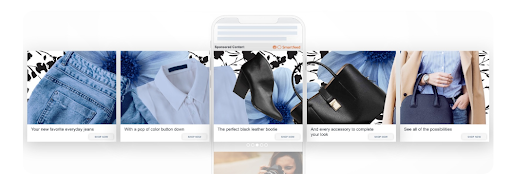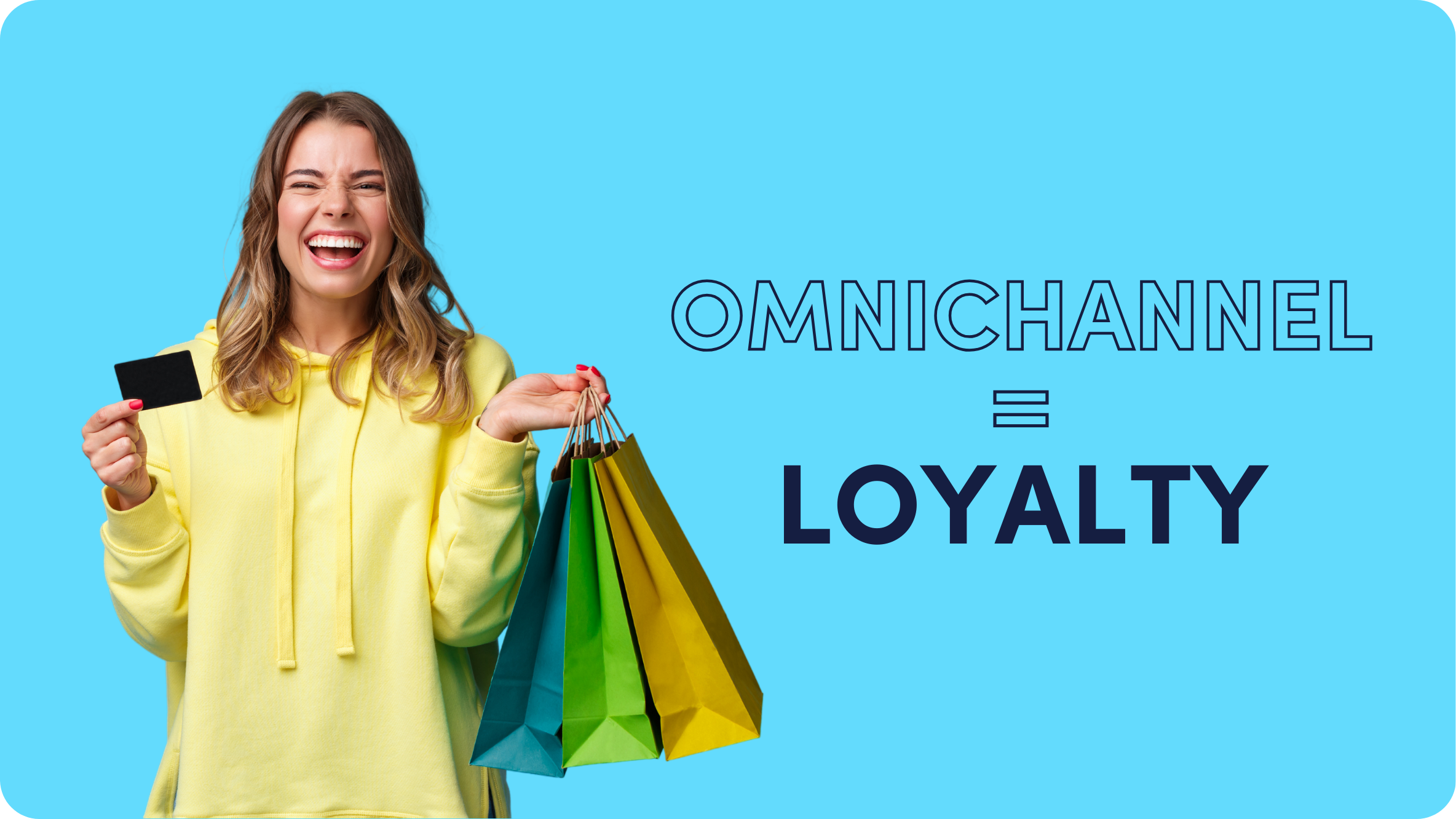Omnichannel Advertising: Cultivating Loyalty in a Multi-Screen Era

Key takeaways:
- Screens are a feature of modern life, from smartphones to electronic billboards. People check their phones approximately 144 times a day.
- To build customer loyalty, brands must transition from a multi-channel to an omnichannel approach, focusing on coherent brand experiences across various screens.
- With mobile leading internet access, optimizing content for mobile is crucial, though desktop and tablet experiences should not be neglected. Instead, align digital ad campaigns with user habits and intentions.
- Seamless, relevant, and non-disruptive advertising across devices requires advanced audience targeting capabilities. Outbrain’s algorithmic-based technology enables advertisers to reach the right audience, on the right screen, at the right time – outside of the closed gardens of social media platforms.
How often do you check your mobile phone?
According to a US-based study, the average number is 144 times a day.
Forty years ago, “screens” meant the TV and the cinema screen.
Twenty years ago, it meant the TV and computer screen.
Today, people are looking at screens all day long. Smartphones, laptops, tablets, smartwatches, TVs, and electronic billboards too.
We are truly living in a multi-screen era. People are accustomed to living their lives on screens: connecting with friends, checking the news and weather, finding information, being entertained, paying bills, gaming, booking a taxi, ordering a meal, and everything in between.
For marketers, multiple screens means infinite ways and opportunities to connect with audiences.
You may assume that the more screens, the easier it is to reach people and win their custom.
The truth is, having multiple screens involved presents a different challenge.
Namely, moving from a multi-channel advertising strategy to an omnichannel one.
More Screens Demand More Brand Coherence
With a multi-channel strategy, a brand aims for visibility on all the channels and screens where their audiences might find them, such as social media, CTV, search engine results pages, and in-app advertisements.
With an omnichannel strategy, visibility is not enough. The goal is to provide a coherent and compelling experience with the brand across all those screens. This smooths the path to building brand loyalty, which is so important to acquire and retain customers.
Between Screens: What it Takes to Connect with Audiences
So, how can brands cut through the clutter to connect with consumers and cultivate loyalty as they hop from one screen experience to the next?
Let’s take a look at how all the parts of an omnichannel ad campaign come into play.
The screen
In a multi-channel world, mobile is emerging as the winner. Almost 80% of internet access is from mobile devices.
Although you should aim to reach audiences across all devices and screens, assume that mobile will account for a majority of interactions. The mobile-first rule remains an essential part of an omnichannel strategy. Optimize your website and online content accordingly.
Outbrain data shows similar tendencies.
At this writing, mobile traffic garners by far the most conversions from Outbrain ads across all regions and verticals, 75%, compared to desktop (21%) and tablet (3%).

Even so, desktop and tablet are still part of the omnichannel experience. Audiences consume content in different places and on different devices depending on the time of day. Being cognizant of your audience’s specific browsing habits will allow you to better tailor content to their needs at that moment.

For example, the chart above might graph the experience of a working professional: someone who checks their phone first thing in the morning, operates on a desktop during the day, and then picks up mobile activity after lunch and later in the day as their attention to workday tasks wanes. Mobile use stays high until later into the evening while decompressing before bed.
Examining the usage patterns of different devices can help you plan how to reach your audience with the right ads in the right way.
💡 Key tip: Multivariate campaign testing is your friend! Test separate devices along with different times of day to ensure you are investing the right media spend on the right device and at the right time.
The ad
While all of the above is super important, let’s not forget how important your content offering is. Because without the right creative, you might make contact with your target audience but not land any punches.
There’s no need to be heavy-handed; after all, native advertising is about being nurturing and persuasive, not the hard cold sell. It’s about making the right impact with your ad format, copy, and images.
With Outbrain ads, there are several formats to choose from, so advertisers can mix and match their campaigns for specific audiences and devices. For example, Click-to-Watch video ads typically get good engagement, because the viewer actively opts in to watch the ad. Unlike standard pre-roll ads, which are ‘forced’ on the viewer, Click-to-Watch ads are not inherently disruptive, so viewers are more likely to be interested in watching.
Carousel ads, on the other hand, are ideal for mobile swiping. Advertisers can present a story across carousel cards, deepening the ad experience for the viewer. The carousel format is also effective in showcasing a range of related products, providing more opportunities for the user to find something that interests them.

Omnichannel advertising goes beyond the ad of course. After clicking on an ad, the user is presented with content, such as a landing page or product page. In a multi-screen world, that content should be suited to different devices, while ensuring a similar ‘look and feel’ and a cross-device experience that builds brand recognition and loyalty.
For instance, a carousel ad on mobile convinces a user to click on the product page. But if the product page is not mobile-optimized, then they may fall away without making the purchase.
💡 Key tip: Consider the complete experience that your audiences have with your ads, on every device. Content that can traverse the multi-screen journey will not only meet user expectations but also create a positive and fulfilling experience on their path to loyalty.
The targeting
Not all the tools you use to reach your target audience are created equal. After stressing how mobile is now the name of the game, it’s really important to be supported by the right technology for targeting your content.
Why?
Because if the experience isn’t seamless on the part of the consumer, you’re sacrificing their trust. And in such a competitive content marketplace, that’s not a risk you should take.
But what does ‘seamless’ actually mean?
Firstly, the ad and content should be relevant and interesting to the user. That requires a lot of user data and hardworking algorithms behind the scenes to crawl the data and determine which audiences should be targeted and when.
Secondly, ‘seamless’ means that the ad should feel contextually appropriate to the user’s environment and should not disrupt or compromise their online experience. Social media platforms tend to do that very well, however, they are closed gardens, and reach is limited to users only when they are actively on the network.
The open web is another story. When people are browsing their favorite websites, they are usually curious and primed to discover new topics, ideas, and products. Research even shows that people demonstrate higher levels of trust in advertising and content on editorial sites than on social media. Outbrain ads provide advanced tech-based targeting functionality for audiences visiting popular publisher sites on the open web. The opportunities to target these audiences and engage them with highly relevant ads and content are endless.
💡 Key tip: Outbrain’s targeting options are based on an enormous bank of first-party data and advanced algorithms. Explore your options to reach audiences on the massive open web, on all their screens, at the right time, with the right ads.
Cultivate Loyalty, On Every Screen
Targeting the right audience across devices with ads and content that resonate with them, on news sites, entertainment sites, and other trusted publishers outside of the walls of social media networks is what seamless omnichannel advertising is all about.
With consumers favoring mobile, and also preferring to discover content while browsing their favorite websites, more advertisers are turning to Outbrain to deliver high-quality omnichannel advertising experiences that build brand loyalty – across screens and across audience segments.










![[Infographic] Which Ad Headlines and Images Catch Your Readers’ Attention?](https://www.outbrain.com/blog/wp-content/uploads/2024/01/ad-headlines-and-images-best-practices.png)
